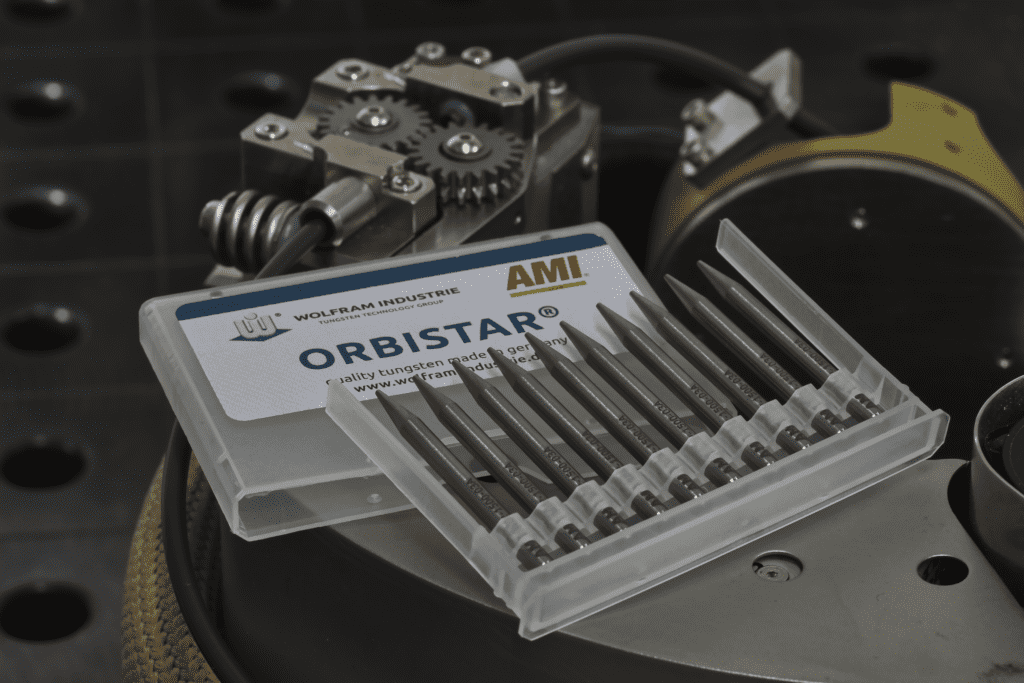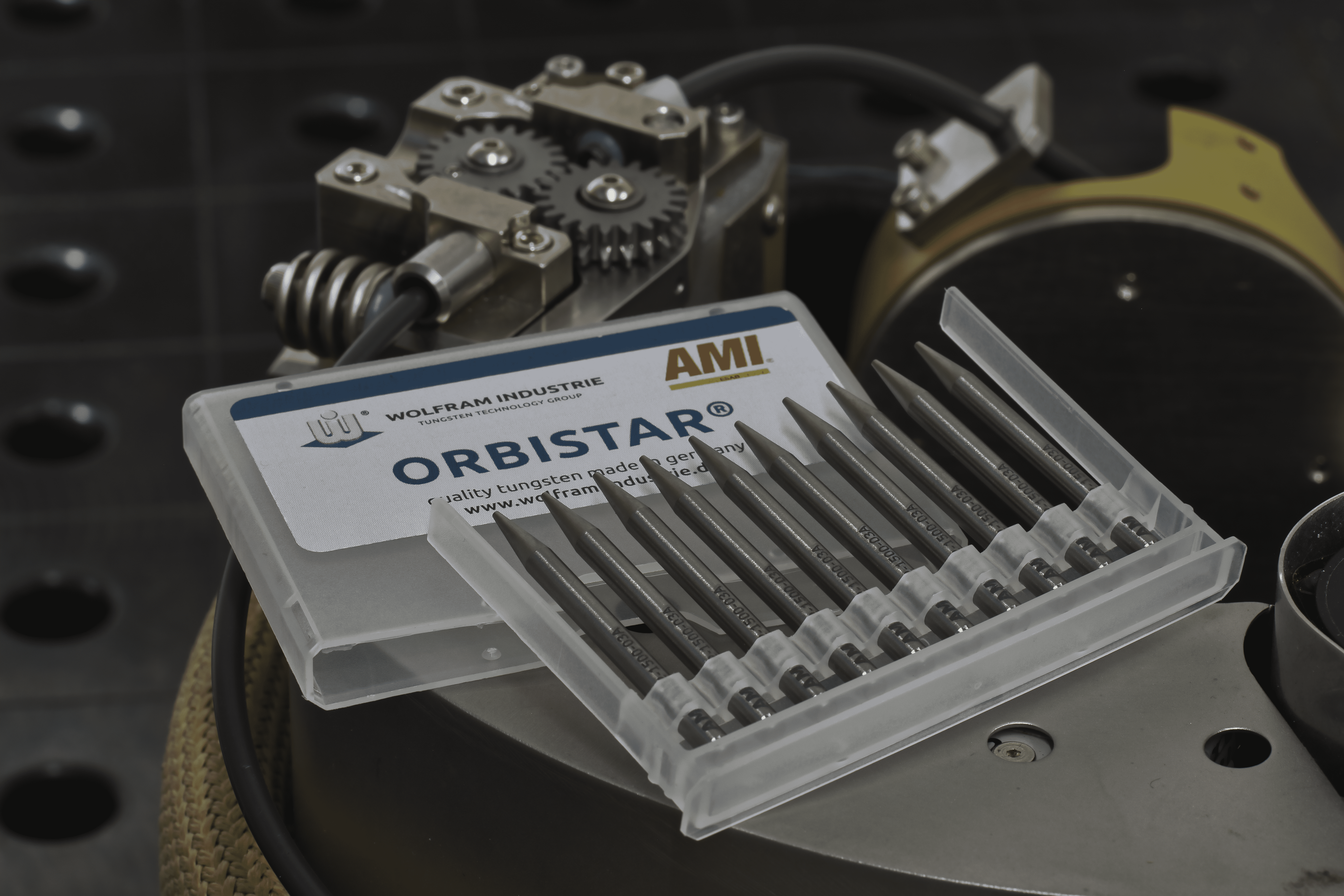
Welding technology investments only become successful when manufacturers take the small details into account. These details can include weld parameters such as feed rate amperage, oscillation, and the material used during the process. Electrode selection, likewise, represents a relatively low-cost detail; however, an improperly selected electrode can result in thousands of dollars in weld damage and the loss of valuable time.
When welding pipes and tubes, tungsten electrodes and GTAW (Gas Tungsten Arc Welding) are preferred. While various types of tungsten are available for welding, not all electrodes can provide the same efficient result. It is also important to understand what makes a quality tungsten electrode and how selecting the correct one is as crucial as performing the welding skillfully.
Selecting the Right Tungsten For Welding
“What is the right type of tungsten electrode for my application?” This is an important question every welder should ask before starting the operation. Tungstens come in various sizes and can be used for a range of arc welding applications, including GTAW or plasma welding. And with each welding task having different specifications—from power sources to weld material composition and thicknesses—a correct tungsten electrode needs to be selected. The use of the right tungsten for welding pipe and tubes ensures:
- Effective welding even at high temperatures
- Pure and precise welding
- High-strength joint formation
The following GTAW tungsten electrode types are the most commonly available:
- Thoriated: This tungsten is best used in DC applications to provide good arc stability for alloys of titanium, copper, nickel, or corrosion-resistant steel.
- Zirconiated: Suitable for aluminum or magnesium alloys, the zirconiated tungsten electrodes are best used in AC applications, where they can handle high amperage and provide great arc stability with less weld spitting.
- Ceriated: This tungsten electrode is suitable for alloys of aluminum, steel, nickel, titanium, or copper. Its advantages include excellent arc stability, low erosion, longer service life, less spitting, and excellent weld for low amperage.
- Lanthanated: Considered versatile tungsten for welding, lanthanated tungsten is suitable for both AC and DC welding applications and provides better arc start and high arc stability at lower voltage and a minimal burn-off rate at a higher voltage.
- Pure Tungsten: With almost 99.5% tungsten content, this electrode provides good arc stability with alloys of aluminum or magnesium. However, its suitability is limited to the medium amperage range. At high amperage, the tungsten tends to split resulting in inclusion in the weld.
Selecting the right tungsten electrode from the many options available is a critical step towards producing a quality weld in a cost-efficient manner.
What Makes a Quality Electrode?
Some electrodes may be bent or have uneven texture, while some may not strictly adhere to the diameter and color-coding standards. When deciding what makes a quality tungsten electrode for your application, the following factors can be considered the most important:
- Chemical composition: With each electrode type, the tungsten composition (which determines the electrode characteristics) varies. Tungsten electrodes should have a precise mix of raw tungsten, additional chemical elements, and specific doping materials. The doping material refers to additives responsible for providing different electrode properties and dictates the need for color-coding the tungsten electrode.
- Electrode diameter: Diameter selection is directly related to the selection of current for the welding procedure. The larger the diameter, the greater the current used and heat handled by the electrode. Without strict adherence to diameter requirements, problems can arise in positioning and holding the electrode.
- Electrode preparation: After correctly selecting electrode diameter and chemical composition, proper preparation is required for the best result. Without proper preparation—including grinding and smoothing of the electrode—issues of contamination, discontinuities, and corrosion can arise. Proper electrode sharpening is not only related to stable arc and desired weld penetration but also to the electrode’s longevity and reduced possibility of tungsten inclusion.
When selecting the electrode for your application, it is necessary to consider the above-mentioned factors and check if they are up to the mark.
Quality Tungsten From AMI for Ideal Weld Results
A high-quality tungsten electrode should have excellent welding properties, be properly ground and smoothed, and provide stable and consistent welds. To ensure high-quality results, AMI provides a wide range of tungsten electrodes from Wolfram. Wolfram Industries manufactures tungsten electrodes that are pre-ground at the proper grind angle and polished for clean welding. For GTAW welding of pipes and tubes, or any other applications, you can rely on AMI’s tungsten for welding.
Arc Machines, Inc., a leader in orbital welding technology provides high-quality pre-ground and polished tungsten for welding in high-spec GTAW applications. To learn more about our products, contact sales@arcmachines.com. For service inquiries, contact service@arcmachines.com. Arc Machines welcomes the opportunity to discuss your specific needs. Contact us to arrange a meeting.





